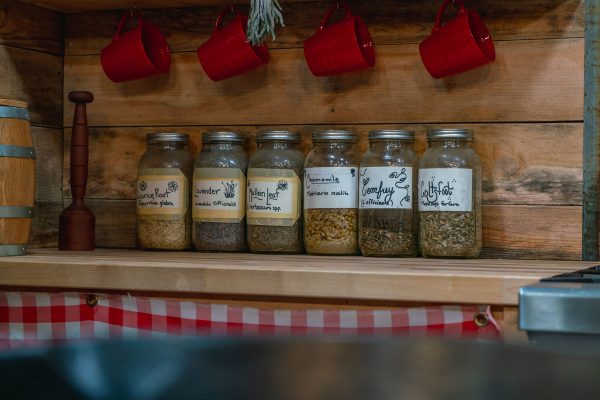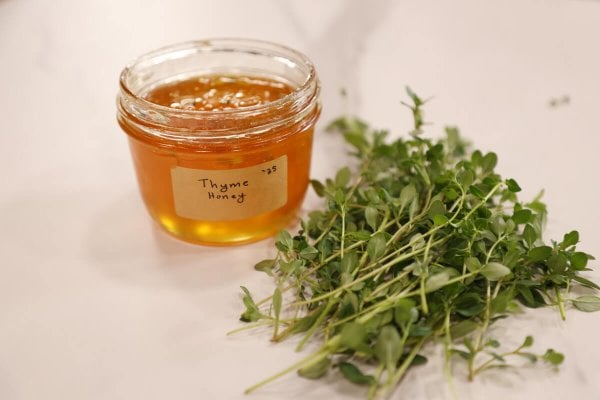
Ketchup is a staple in most homes. Most children want it on everything! What if you could have fermented ketchup that’s a healthier alternative to store-bought without all the unneeded (and unhealthy) ingredients? Especially when it can easily be made from simple pantry staples you already have at home?
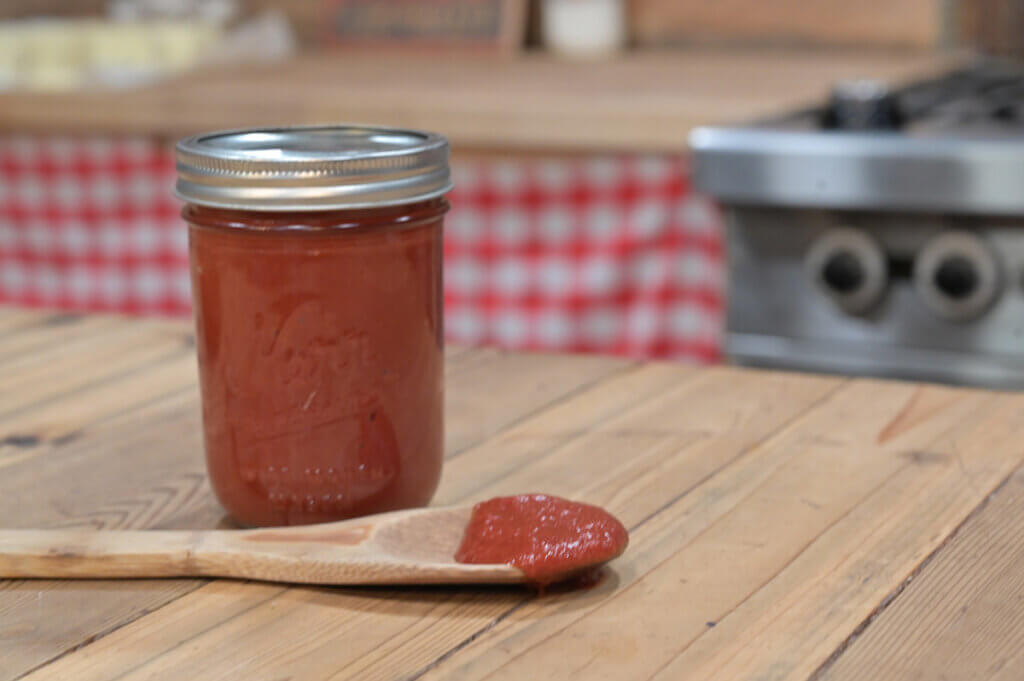
This is my homemade, DIY fresh fermented tomato ketchup recipe. It may not make French Fries healthier, but it is a great start. I also have a fermented mayo recipe, fermented asparagus relish, fermented Sriracha, fermented hot sauce, and a homemade mustard and an easy BBQ sauce recipe, so your condiment bin can be completely homemade.
Why I Love This Recipe
I love this recipe because you can take a main staple in your house, ketchup, and simply recreate it into a healthier and more probiotic-friendly one.
This recipe will also make the ketchup semi-shelf stable. And the best part? You can do it exclusively with pantry ingredients you may already have.
I love that I can make it without my family knowing, as I am trying to get them to eat healthier. It has probiotics and beneficial enzymes that will help digest your food. (Source) (Source) Yet the flavors hide the fermented quality and make the ketchup taste better.
If you’ve tried fermented foods before and haven’t liked them, let me encourage you to give this fermented ketchup a try. The recipe below is savory and tangy and has much more depth than store-bought ketchup. Also, check out my fermented garlic recipe that can be used in this ketchup as well.
It’s important to note that I am not a certified medical practitioner. This post is not intended to diagnose or treat but is for informational purposes only. Please contact your healthcare professional before introducing new herbal and natural remedies into your wellness routine.
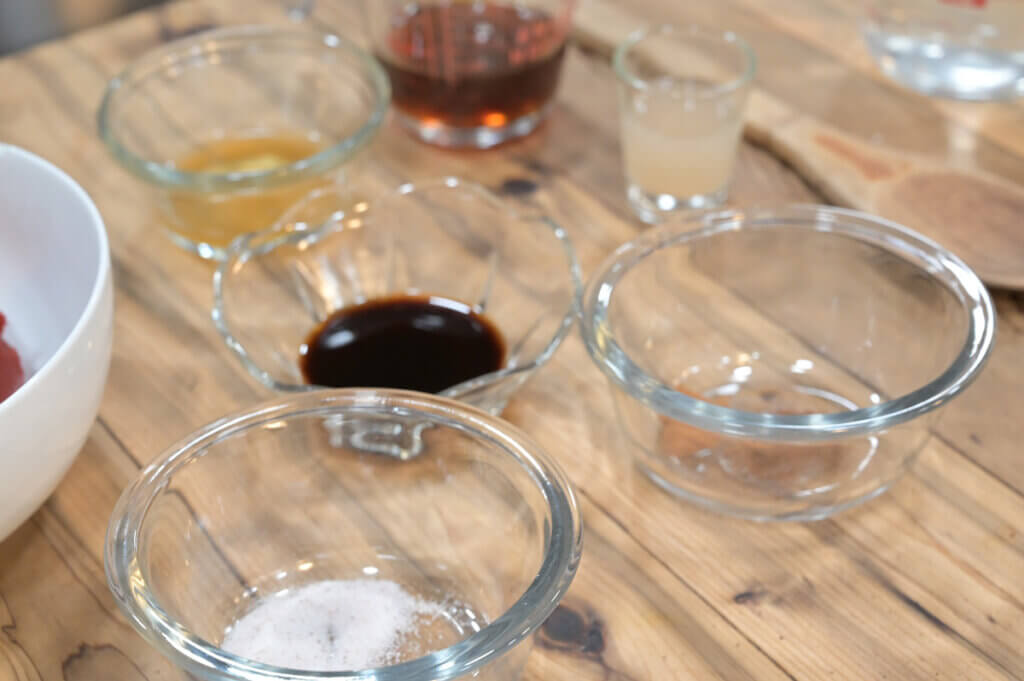
Ingredients Needed for Fermented Ketchup
- Tomato Paste – You can use homemade or canned.
- Maple Syrup – This is used as a sweetener. You can also use sugar, monk fruit, or honey (honey will change the flavor a bit, but is still delicious).
- Worcestershire Sauce – This sauce gives the ketchup its depth.
- Ground Cloves – Though you may not consider this a necessary ingredient, it’s what give ketchup its identifiable spice.
- Ground Cinnamon – This adds additional spice to the ketchup flavor and compliments the cloves well. Homesteading Hack: You can also use dried or raw ginger, garlic, or pepper for additional flavors.
- Fine Salt – Salt is used in fermenting to help stall the bad bacteria from forming while the good bacteria takes over. (Source) Salt also has a protective quality and will add to the shelf life of the ketchup. If you use a good quality salt like Redmond Real Salt, then it will also add a mineral boost to the ketchup. Homesteading Hack: Using that link for Redmond Salt will automatically give you 15% off your order!
- Raw Apple Cider Vinegar – Vinegar adds tanginess to ketchup. The raw vinegar has good yeast and bacteria in it as well, so it works nicely as a starter liquid to kick off the fermentation process. (Source)
- Starter Liquid – You can use any starter liquid from an active ferment, such as kombucha, sauerkraut, kefir, or whey from yogurt. Homesteading Hack: Make sure the starter liquid is alive. This means it has not been canned or pasteurized. And don’t worry; it won’t make the ketchup taste like sauerkraut or yogurt.

How to Make Fermented Ketchup
Here is how easy it is to make delicious ketchup in your home. It will be slightly spicy, sweet, and tangy. This recipe makes one pint but can be halved or doubled.
- Use a large bowl and have a spatula or large spoon ready to mix the ingredients. You can also use a mixer if you prefer.
- Add all the ingredients into your bowl, one by one, then mix with the spatula until well incorporated.
- Add water a little bit at a time, if needed, to reach the correct consistency. Just aim for what you know ketchup consistency to be. It should be slightly liquid and look less like a paste.
- Taste and adjust seasonings to your preference.
- Add ketchup to a clean Mason jar and fill to the top of the jar.
- Use a clean cloth to wipe the rim of the jar.
- Place a canning lid and band on top and screw it on, but not completely tight. You want some of the air to escape in the fermenting process.
- Let it sit on the counter for 6 to 10 hours, then put it in the refrigerator.
- Let it chill; then, it will be perfectly suitable to use as regular ketchup.
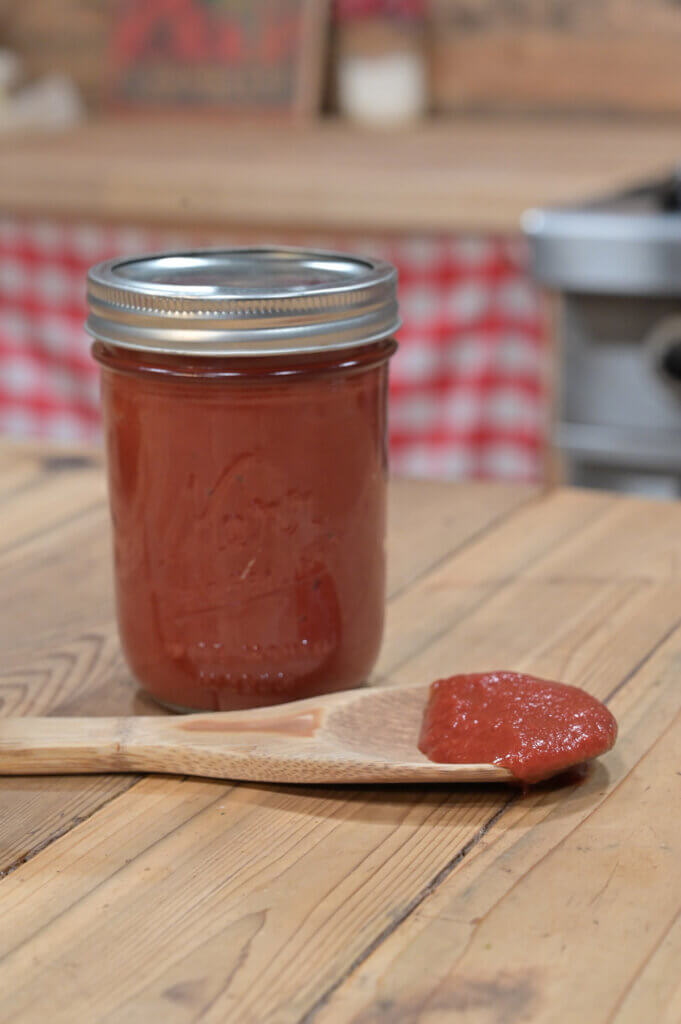
How to Store Fermented Ketchup
Fermented ketchup can sit out for about two weeks at room temperature before it starts having “off” flavors. After two weeks, you may begin to taste the alcoholic nature of a ferment that’s been left for too long.
If you have a cool pantry or cold storage (55°F or below), you can store ketchup on the shelf for even longer (upwards of a month or more).
However, if you love the flavor of the ketchup after the 6-10 hour fermentation time, I recommend storing it in the refrigerator as those flavors will remain pretty much the same, and the shelf-life will be months.
Homestead Hack: Anytime you’re working with a ferment, you’ll want to make sure the utencil you’re using to dip into the jar is clean. Introducing bacteria will shorten the shelf-life of a ferment.
The good news is this ketchup will continue to grow and mature in flavor as it sits. So try it out and see if your loved ones can tell the difference!

Join Our Challenge Inside the Membership Area Now!
Remember to join our upcoming Pantry Challenge inside the Homestead Kitchen Gold Membership area. In the upcoming Pantry Challenge, we’ll be covering the following:
- Stocking your pantry.
- Properly cleaning and organizing your pantry.
- Rotating your food stores.
- Bulk buying.
- Bulk storage.
- Creating and canning your own convenience foods and mixes.
Other Posts You May Enjoy
- Easy Meatloaf Recipe
- Quick and Hearty Easy Tomato Soup Recipe
- Easy Freezer Meal Cooking Tips
- Sweet Pepper Hash
- Pizza Pepper Poppers (Keto Friendly)
- Preserving Herbs in Salt
- Homemade Garlic Salt
- 7 Staples to Always Have on Hand
- Building Up a Well-Stocked Pantry

Fermented Ketchup
Ingredients
- 1 1/2 cups tomato paste homemade or canned
- 1/3 cup maple syrup or sugar, monk fruit, honey
- 1 Tablespoon Worcestershire Sauce
- 1/8 teaspoon ground cloves
- 1/8 teaspoon ground cinnamon
- 1 teaspoon fine salt
- 2 tablespoons raw apple cider vinegar
- 2 Tablespoons whey or sauerkraut juice, kombucha or other starter culture
Instructions
- Use a large bowl and have a spatula or large spoon ready to mix the ingredients. You can also use a mixer if you prefer.
- Add all the ingredients into your bowl, one by one, then mix with the spatula until well incorporated.
- Add water a little bit at a time, if needed, to reach the correct consistency. Just aim for what you know ketchup consistency to be. It should be slightly liquid and look less like a paste.
- Taste and adjust seasonings to your preference.
- Add ketchup to a clean Mason jar and fill to the top of the jar.
- Use a clean cloth to wipe the rim of the jar.
- Place a canning lid and band on top and screw it on, but not completely tight. You want some of the air to escape in the fermenting process.
- Let it sit on the counter for 6 to 10 hours, then put it in the refrigerator.
- Let it chill; then, it will be perfectly suitable to use as regular ketchup.
Notes
- You can add spices such as ground or raw ginger, powdered or fresh garlic, and pepper.
- This recipe can be doubled or cut in half.











